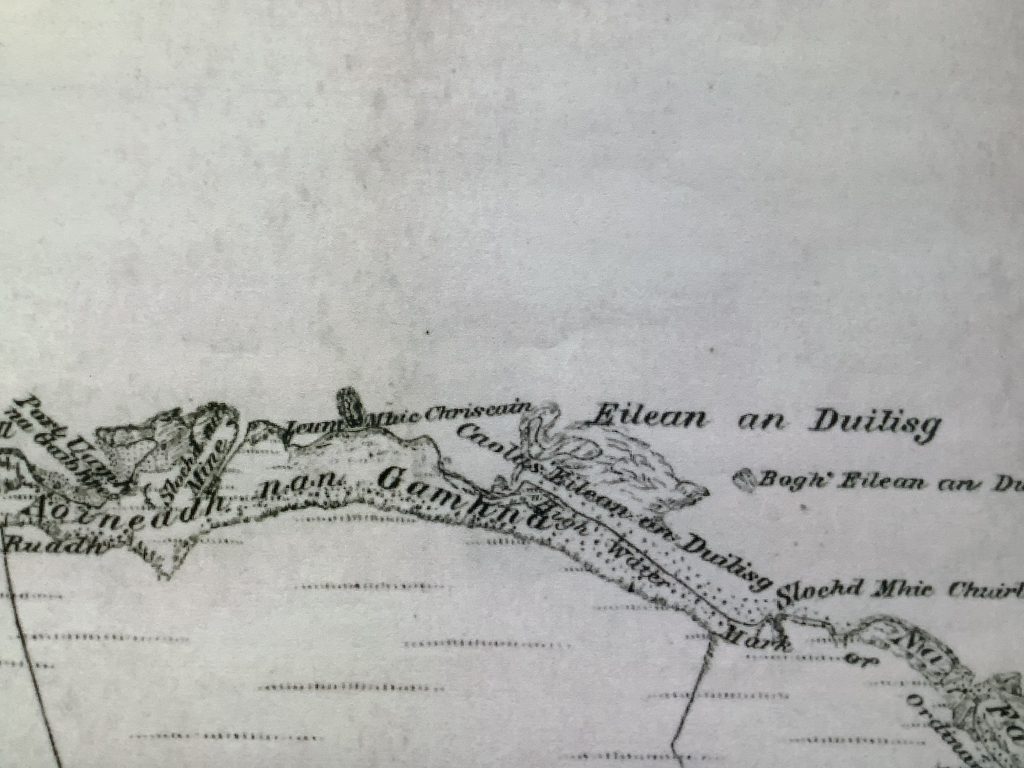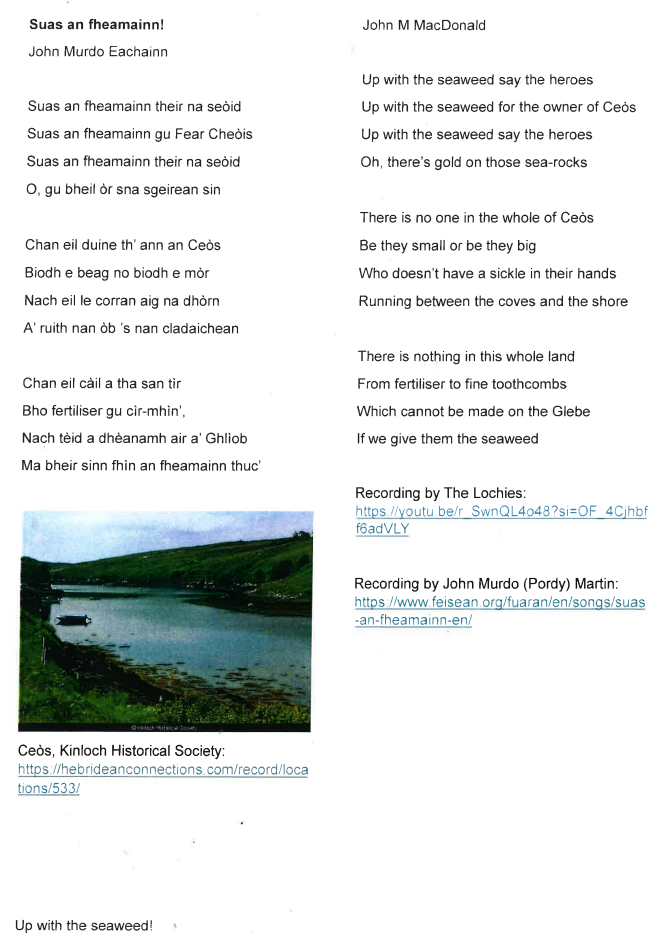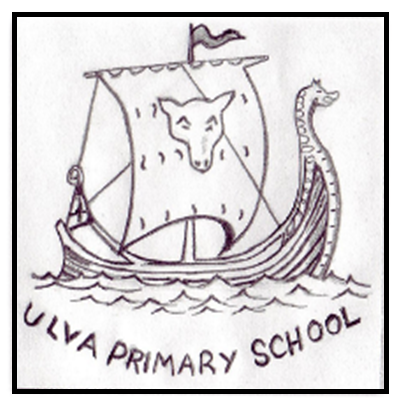Alasdair Whyte – Gaelic Seaweed Workshop
As part of our learning about seaweed, we were so grateful to Alasdair Whyte for taking time out of his busy schedule to come and share his extensive Gaelic and Local History knowledge with the children.
He talked the children through a number of Gaelic names for familiar seaweeds, explaining the meaning behind them when translated. One of our favourites was for Serrated Wrack, which in Gaelic is known as Chriein. The Gaelic word cìrean means ‘a wee comb’. It is also the word used for a cockscomb: the fleshy bit on the top of the head of some birds like domestic cockerels. In the name of this type of seaweed, it describes the seaweed’s ‘serrated’ or ‘jagged’ or comb-like shape. The Gaelic name means ‘the comb-seaweed’ or ‘the seaweed that looks like a comb’.
The children learned some Gaelic phrases which include seaweed in them, for example,
Tha an uiread aig Mrs Carmichael ri dhèanadh eadar duileasg is maorach.
(‘Mrs Carmichael has so much to do between harvesting dulse and shellfish.’)
This highlighted to the children that seaweed was clearly playing a big part in daily life on the islands, for there to have been phrases created including it.
Another highlight for the children was finding out there is a tiny island off the coast of the south of Mull which in English is called Dulse Island and in Gaelic is called Eilean Duilisg! The seaweed must have been important to this community to name an island after the seaweed that was growing around its waters.


Ross
I enjoyed finding out what seaweed was in Gaelic.
Eilidh
I enjoyed singing the Gaelic song about seaweed!
Aoife
I enjoyed learning about the Gaelic place names which have seaweed in them.
The UN Conventionon the Rights of the Child
Article 28 (right to education)
Every child has the right to an education.
Primary education must be free and
different forms of secondary education
must be available to every child. Discipline
in schools must respect children’s dignity
and their rights. Richer countries must help
poorer countries achieve this.
Article 24 (health and health services)
Every child has the right to the best
possible health. Governments must
provide good quality health care, clean
water, nutritious food, and a clean
environment and education on health
and well-being so that children can stay
healthy. Richer countries must help poorer
countries achieve this.
